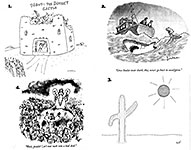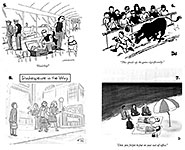 |
||||||||||||||||||||||||||||||||||||||||
Opus 383 (completed September 1, 2018). We examine a great wad of editorial cartoons and report on the 2018 San Diego Comic-Con. Alas, no book reviews this time: too much editoonery to review. But next time—in less than two weeks—we’ll do an opus without editoonery and some book reviews, namely DC Comics Before Superman, Mr. Fish’s And Then the World Blew Up, and maybe Jules Feiffer’s new Graphic novel. Meanwhile, here’s what’s here, in order, by department—:
NOUS R US Free Press Day Strikes Back at the Trumpet Ditko’s Millions NCS To Hit the Beach Editoonist Tired of Trump, Erstwhile Ideal Target Run Continues the March
SANDY EGGO COMIC-CON, 2018 Lots of Pictures San Diego Comic-Con Wins Suit
FUNNYBOOK FAN FARE Captain America No.1 by Ta-Nehisi Coates Batman No.50 Catwoman No.1 with Joelle Jones Doomsday Clock So Far (up to No.6) Mickey Spillane’s Mike Hammer
TRUMPERIES Quirks and Antics of the Prez
EDITOONERY Lots More Pictures Some of the Best Editorial Cartoons of the Last Month (With Strategic Pictorial Interludes to Rest Your Brain)
CHRIS WARE’S RECOMMENDED READING
A-GAGGING WE SHALL GO Silly and Nonsense at The New Yorker
QUOTE OF THE MONTH If Not of A Lifetime “Goddamn it, you’ve got to be kind.”—Kurt Vonnegut
Our Motto: It takes all kinds. Live and let live. Wear glasses if you need ’em. But it’s hard to live by this axiom in the Age of Tea Baggers, so we’ve added another motto:. Seven days without comics makes one weak. (You can’t have too many mottos.)
And our customary reminder: don’t forget to activate the “Bathroom Button” by clicking on the “print friendly version” so you can print off a copy of just this installment for reading later, at your leisure while enthroned. Without further adieu, then, here we go—:
NOUS R US Some of All the News That Gives Us Fits
Striking Back at the Trumpet The Boston Globe got fed up, and on August 10, it proposed a coordinated editorial response from newspapers nationwide to Trump’s frequent attacks on the news media. ‘‘We are not the enemy of the people,’’ said Marjorie Pritchard, deputy managing editor for the editorial page of the Globe, referring to a characterization of journalists that Trump has used frequently. The president, who contends he has largely been covered unfairly by the press, also employs the term ‘‘fake news’’ when describing the media. Bob Salsberg at the Associated Press reported that the Globe set August 16 as the date for newspapers all over the country to write and publish editorials denouncing what the newspaper called a “dirty war against the free press.” Over 300 newspapers joined the crusade to affirm the value of the First Amendment’s guarantee of a free press. The New York Times began by citing the famous 1787 statement by Thomas Jefferson: “Were it left to me to decide whether we should have a government without newspapers, or newspapers without a government, I should not hesitate a moment to prefer the latter.” “That’s how he felt before he become president anyway,” the Times continued. “Twenty years later, after enduring the oversight of the press from inside the White House, he was less sure of its value. ‘Nothing can now be believed which is seen in a newspaper,’ he wrote. ‘Truth itself becomes suspicions by being put into that polluted vehicle.’ “Jefferson’s discomfort was, and remains, understandable,” said the Times. “Reporting the news in an open society is an enterprise laced with conflict. His discomfort also illustrates the need for the right he helped enshrine. As the founders believed from their own experience, a well-informed public is best equipped to root out corruption and, over the long haul, promote liberty and justice. “‘Public discussion is a political duty,’ the Supreme Court said in 1964. That discussion must be ‘uninhibited, robust, and wide-open,’ and ‘may well include vehement, caustic and sometimes unpleasantly sharp attacks on government and public officials.’” The Times acknowledged that reporters make mistakes. “Correcting them is core to our job,” it went on. “But insisting that truths you don’t like are ‘fake news’ is dangerous to the lifeblood of democracy. And calling journalists the ‘enemy of the people’ is dangerous, period.” The Denver Post’s editorial went like this—: “Journalists in the Denver Post newsroom spend their days in pursuit of the truth. There’s no political filter or agenda belying their printed words, just a desire to inform the public. “It’s true that sometimes a newsstory leaves much to be desired,” the Post admitted, citing a reader who felt in the paper a slant against Trump, saying, “If you haven’t told the whole truth then you haven’t told the truth.” The Post agreed: “Errors of omission do occur. Sometimes there’s simply not enough space to print all the news or time to get all the reporting done.” And sometimes a natural bias that “everyone carries with them,” almost unconsciously, influences the selection of details. “But the reporters and editors who work to bring you your news are not conspiring to misinform. ... “We could see how editorial boards working together to present a message opposing Trump’s assault on the media cold be construed as confirming the president’s fake news conspiracy theory. This coordinated response, however, is limited to pushing back against Trump’s efforts to undermine the work of journalism across the nation. We are simply standing up for what we believe in as journalists. “We believe that an informed electorate is critical to democracy ... that journalism is integral to the checks and balances of power; and that the public can trust the facts it reads in this newspaper and those facts coming from mainstream media. ... “And so we are taking this opportunity to assure our readers that the Denver Post newsroom and opinion pages are dedicated to bringing you all the facts. We are also encouraging our readers to point it out when we are missing the mark of telling ‘the whole truth.’ We are listening and capable of self-reflection.” Not content with attacking free speech in the news media, the Trumpet has just (August 28) announced his displeasure with Google and said his minions would explore the possibility of regulating the search engine because, the Prez alleges, the tech giant manipulates its search results to prominently display negative stories about him and other Republicons. He may not be successful. “There’s no question about this,” said Eric Goldman, co-director of the High Tech Law Institute at Santa Clara University. “The courts have uniformly ruled that search results are protected speech.” But the proprieties have never stopped the Trumpet before. Just because it’s unconstitutional, unethical and antithetical to everything our country stands for has never ever given him so much as a momentary pause in pursuit of his various vendettas.
Editorial
cartoonists in the
Association of American Editorial Cartoonists decided to join in the national
effort, and on August 16 (or thereabouts) many produced cartoons strenuously
supporting freedom of the press. At the upper left in the adjoining visual aid, Jimmy Margulies creates a visual symbol in which a free press clearly supports democracy. Next around the clock, Dave Granlund uses a rogues gallery to remind us that “enemy of the people” is not a phrase invented by the Trumpet. And looking over the line-up of others who have deployed the idea is not comforting. Paul Fell’s image makes the Trumpet the, er, fall guy, but the most “persuasive” of the actors in this two-panel drama is the Free Press. Finally, in a contrarian mood, Chip Bok supports the Trumpet’s thesis. And it’s hard to argue with him. As we’ve just seen, not all AAEC members were enthusiastic about AAEC supporting the crusade. The conspicuous example is Ted Rall, who is presently engaged in suing the Los Angeles Times because the paper smeared his reputation with “fake news” and fired him. (For the background on this matter, see Opus 342a.) So Rall posted the following (in italics) to alert fellow AAEC members to an alternative view of the Trumpet’s plot to suppress a free press—: As I know from painful personal experience, it is true that newspapers sometimes deliberately publish falsehoods (“fake news”) intentionally, and refuse to retract them. Trump’s rhetoric is overheated and self-serving, but he is not entirely wrong. Anyway, beyond rhetoric, what has Trump actually done to hurt press freedoms? The only legislative change he has floated, but has not manifested itself in an actual bill, is making it easier to sue for libel. Here, too, he would be right: it is way too hard to sue newspapers for libel when you have been defamed. ... Nixon’s thugs broke into Daniel Ellsberg’s office to discredit a whistleblower and he asked a court to block the publication of a major newspaper. Trump has done nothing approaching this level. On the local level, a police chief in Baker City, California set out to destroy a newspaper reporter’s life after he objected to random searches of high school students at a basketball game. The chief manufactured a fake dossier of “crimes” the reporter did not commit and submitted it to his paper, which fired him, and then to a second job, which also fired him. And local cops pulled him over constantly. He is suing in California. That’s real fascist behavior. Where is the AAEC in his case? But that’s not the point. The point is that the AAEC has repeatedly railed on and on in official communiques about how awful Trump is. Trump is a Republican. Attacking him is a partisan act. By definition. It would be different, perhaps, if there were a specific policy or bill that attacked journalists. But there is not. All there is a president whose tone is crass and crude. In truth, there is little besides his tone that distinguishes him from previous presidents, and it is that which freaks people out. ... Back to the point: enough Trump-bashing by the AAEC. We have pro-Trump members and they deserve to see our By-Laws and tradition of collegiality respected. How can we ask the president to follow traditions when we blatantly ignore our own founding principles? In short, saith Rall (still in italics), the meme that Trump represents a serious threat to the First Amendment is highly debatable, to say the least. Many presidents have gone to war with the press (see Nixon) and/or interacted with journalists increasingly disrespectfully (all of them in my lifetime, as evidenced by the ever-shrinking number of press briefings and conferences).
PERHAPS RALL’S MOST SERIOUS OBJECTION to the crusade’s attack on Trump is that it violates the AAEC By-Laws. I think Rall has a point that newspapers sometimes produce what Trump calls “fake news.” The purity of newspapers in exercising the First Amendment is not absolute. But Rall’s invoking the AAEC By-Laws is as questionable as Trump’s threat to a free press. The only bylaw that might apply is the one that sets out the purpose of the association—“to promote and stimulate public interest in the editorial cartooning profession and to create close association among the editorial cartoonists through mutual interest.” Nothing else I’ve been able to find in the By-Laws demands or even suggests that the association should refrain from taking sides in a public debate. And the First Amendment crusade isn’t taking sides politically. It is possible to argue, as Rall apparently is, that attacking Trump in the name of the First Amendment betrays an anti-Republican bias thereby implicitly creating a division of members into Republicans and Democrats, which violates the spirit of collegiality inherent in “close association ... through mutual interest.” But I disagree. Given the circumstances and Trump’s history as a bull in a china shop, it’s fair to think that his continual assault on the news media might break some First Amendment china. As an organization, AAEC has publicly defended the First Amendment in the past, and probably most members (most of whom are, admittedly, liberals) see joining newspapers in championing the First Amendment as a bipartisan effort. Trump is being attacked by newspapers and by AAEC only for assaulting the First Amendment. Not for anything else. That scarcely violates the implied collegiality of the By-Laws. A few AAEC members objected to joining the First Amendment crusade because it was a crusade by newspapers and newspapers don’t deserve the support of editorial cartoonists. As one member put it: “Our lending them a hand after they have fired almost ALL of us — while hiring tons of writers — is pathetic. This is the psychology of an abused child desperately begging their batterer for love.” Well, maybe. But to refrain from protesting an attack on the First Amendment for this reason seems self-serving in a petty sort of way. Trumpian almost. For editoonists to defend the First Amendment from assault may be self-serving, but it ain’t petty.
MISS AMERICA AGAIN And what, you might ask, is the Miss America Pageant going to substitute for the swim suit and evening gown competitions that have both been #MeToo’d out of existence? Shifting to real world talents, they’re going to have a typing contest. The winner will be the one who is fastest with fewest errors.
Spider-Man’s Reclusive Co-creator Worth $1.3 Million When He Died (Or Not?) By Julia Marsh, New York Post He co-created Spider-Man — yet died with a relative pittance in the bank. [“Relative pittance”? Relative to what? Clearly, he was not a pauper. $1.3 million? Or is that a hoax?—RCH] Steve Ditko, who helped create the Marvel Comic superhero that morphed into a multibillion-dollar industry, left behind an estimated $1.3 million when he died, new Manhattan court papers show — although that figure may even be a stretch, his lawyer acknowledged to the Post on Monday. “It’s possible that he’s not worth that much,” said the lawyer, Howard Borkan, who added that he only learned about the reclusive Ditko’s life as a comic-book extraordinaire from his obituary after he died at age 90 in June. [So no one actually knows how much money Ditko left behind, right?] Ditko’s two siblings, an elderly brother and sister, are his only heirs and will inherit his modest estate since he did not leave a will. The $1.3 million figure is based on an estimate provided by the brother, Patrick S. Ditko, according to Borkan. But Patrick, 83, admitted to the Post on Monday, “I know nothing about his finances or anything about his personal life.” His brother was never in it for the money, Patrick added, and that’s probably a good thing: copyright laws funneled all the profits stemming from Spider-Man to Ditko’s former employer, Marvel. Ditko, who never married or had kids, shunned publicity. “Until he passed I didn’t know what he had done,” his lawyer said, adding that Ditko came to him years ago for help renegotiating his lease. Borkan said he only knew Ditko as a “very nice man” whose hearing had gone in the last few years of his life. “He was hard to reach on the phone. I don’t think he had an answering machine,” Borkan said. Patrick said his older brother last visited the family’s hometown of Johnstown, Pa., a few years ago. Patrick and his sister, Elizabeth Russak, 87, still live in Johnstown, where their late steel-mill worker dad introduced his eldest son to newspaper comics. Ditko had been hospitalized for “age issues” at St. Luke’s-Roosevelt Hospital in the months leading up to his death June 29, Borkan said. He was six months behind on the $2,000-a-month rent for his West 51st Street apartment when he died, although this was because “he was in the hospital,” Borkan said. Ditko was released from the hospital, only to die alone in his apartment.. “His body was not found until a few days later when the NYPD had to be called to gain access to the unit,” Borkan wrote in court papers..
NCS TO HIT THE BEACH From National Cartoonists Society (slightly edited) NCS has announced that it has chosen the city of Huntington Beach, California, to host the inaugural NCSFest, a celebration of comics and cartoon art from all over the world. Based on the comic art festivals that are hugely popular in Europe, the festival will be held over the weekend of May 17-19, 2019. NCSFest will include the usual events and awardings of NCS’s Reubens Weekend—and more. The Fest is clearly NCS’s attempt to broaden the appeal of its annual meeting and thereby to preserve it. Hundreds of the world’s most celebrated creators are expected to attend the three-day event, participating in seminars, exhibitions, workshops, panel discussions and signing sessions, the vast majority of which will be free to the public. Downtown Huntington Beach will be the setting, with all events staged beachside, on the iconic pier, at the city’s Arts Center and library and in local hotels and businesses, all within easy walking distance. To create NCSfest, the Society has partnered with the Lakes International Comic Arts Festival, a much-admired annual festival held in the town of Kendal, in Britain’s picturesque Lake District. Julie Tait, Director of LICAF, will act as Assistant Director of NCSFest. “This is probably the most ambitious comic arts festival ever staged in North America,” said NCSFest Director Steve McGarry.“We’ve long admired the great comic arts festivals of Europe and we wanted to adopt that model for an American audience. We were hugely impressed with the work that Julie Tait has done, in a very short time, in establishing the Lakes International Comic Arts Festival as the UK’s premier festival, so we are delighted that Julie and her team have agreed to lend their expertise.” To further cement bonds between United States and European creators, NCSFest is staged in association with France’s Lyon BD Festival, whose director Mathieu Diez is part of the NCSFest advisory team. Diez expressed his delight at being involved in NCSFest, commenting: “I am extremely excited to be part of this new project aimed at bringing Europe’s fashion of comic art festivals in the United States. I look forward to building a strong French comics presence and wide and innovative programming around the interaction of both cultures of comics.” “Comic book conventions have become commonplace in every big city in America, but this is something different,” says NCS President Bill Morrison, the editor of Mad magazine. “NCSFest will offer cartoonists and fans a rare opportunity to share in a weekend celebration of comic and cartoon art together in a way that few in this country have experienced.”
TRUMP WAS A POLITICAL PINATA FOR A WHILE, THEN ... By Michael Cavna ONCE UPON a campaign, according to the humorous truth of Pulitzer-winning artist Mike Luckovich, he and his cartooning colleagues reveled in having Donald J. Trump around as a political piñata. As we approach the midpoint of a first term, is the commentator still so thrilled about devoting so much of his professional life to President Trump?
“The last three presidents before Trump were all pretty normal,” continues Luckovich, and “drawing cartoons during their terms was easier. When you have someone so incompetent, absurd and crazy, it’s hard to top that in a cartoon.” Luckovich does his daily best to top Trump’s tweets and tirades, though, as reflected in a new collection of his recent cartoons titled “A Very Stable Genius.” ... One thing I try to show is that Trump’s a buffoon,” says the left-leaning cartoonist. “It amazes me that there’s a cult following around Trump. My hope is that if I ever fall under the sway of a cult leader, I hope he or she isn’t a huge doofus. That would be really embarrassing.”
THE MARCH GOES ON Having discovered in the success of the March graphic novel trilogy the power and appeal of this comics form, the authors have taken up the next chapter of civil rights history after the March saga: Run: Book One is the graphic story of John Lewis’s struggle to lead the Student Nonviolent Coordinating Committee (SNCC), one of history’s most important nonviolent organizations, as it loses the support of much of the federal government and many of its most important allies. How can SNCC—an organization built on consensus, integration, and nonviolence—survive in the face of powerful disagreements over black political power, white inclusion, the war in Vietnam, and the role of nonviolent civil disobedience in the movement? Run is the story of loss, and in the ashes of John Lewis’s role in the civil rights movement, he finds his future in public service. The first in a projected four-book series, Run is by John Lewis (Author), Andrew Aydin (Author), Nate Powell (Illustrator), Afua Richardson (Illustrator).
THE SANDY EGGO COMIC-CON, 2018 Huge. Vast. Gigantic. Multitudinous, as the Bard might say. And kindred hoopla. The week before, Entertainment Weakly published a special Comic-Con “double issue” preview (July 20/27), kicking off its coverage on page 29 and ending 53 pages later. That’s 49% of the magazine’s 108 pages. The Con has indisputably arrived in the sacred precincts of popular culture. Perhaps 300,000 people converged in San Diego for the 49th annual Comic-Con International, a pop culture extravaganza rooted in dingy pages of antique funnybooks but now embracing movies, television, games, toys and what-have-you. About 135,000 of this mob were ticket-holders, estimated Peter Rowe at the San Diego Union-Tribune, and privileged thereby to enter the vastness of the San Diego Convention Center where the exhibit hall, filled with exhibit booths, stretches for six city blocks. The other 200,000 or so fans and fanaddicts milled around the neighboring Gaslamp Quarter which had transmorgrified into a kind of street fair for the occasion—walk-through installations, movie premieres, tv pilots, video-game competitions, and an array of sidewalk displays. The four-day Con features 2,000 hours of talks, film screenings, workshops, masquerades, and video games taking place in 19 meeting rooms in the Convention Center, plus 3 ballrooms in the adjoining Marriot Marquis and Hilton Bayfront hotels. While many of the program presentations are about comics, most of the largest meeting rooms are devoted to appearances by actors and actresses who attend at the behest of their studios to build buzz for forthcoming movies and tv shows. Conan
O’Brien brought his late night show to San Diego for the fourth year.
Broadcasting from a downtown theater, he draws his guests from celebrities
appearing at the Con—Samuel L. Jackson, Olivia Munn, Bryan Cranston and more.
I watched a few minutes of one of these but soon turned it off: the silliness
was simply more than I could bear at the end of a long day. Many (me, too, on a bad day) say the Con has lost its comic book soul to Hollywood. If not Tinseltown, then video games and toys (masquerading as “action figures”). But Mark Evanier, a tv and comics writer who has attended every Con since the first and who moderated 15 presentations at this year’s Con, strenuously disagrees: “It’s not about anyone,” he told Rowe. The show is too multi-faceted, he went on, for any single person, medium, or genre to dominate. “Ninety-nine percent of the people who come to Comic-Con don’t care that Conan is here. It’s all about the event, not about any one person. Everyone has a very different Comic-Con. You have to roll your own.” And on a good day, I agree. The Con is lots of fun, breath-taking in its variety and scope. On the first day that you walk into the exhibit hall, you start grinning and saying to yourself, “I wish this could go on forever.” By the end of the Con, though, you’re exhausted physically—and mentally. And you’re saying, “God, is this thing going to go on forever?” In between the beginning and the ending, you’re having a great time. Reporter Rowe estimated that the Comic-Con’s expenses this year will run about $16 million. The Con pays for an extensive shuttle-bus system: at its peak, it deploys 62 buses to reach every host hotel and motel where Con-goers are staying—about 50 in San Diego’s downtown plus another 35 or so near the airport or on islands dotting the bay, Coronado, Shelter, and Harbor, plus distant Mission Valley (with 18 participating properties). Operating the Con itself requires 4,500 volunteers and several thousand (or so it seemed) security personnel. Guards are everywhere, standing at every entrance to every space and patrolling the halls throughout the Center. The volunteers cost nothing, but the security guards— they take a big chunk of the Con’s budget. Year-round, the Con is run by about 80 full-time (paid, I assume) staffers, including temporary help. The board of directors numbers a lean 13. Much of the work through the months is entrusted to a committee of about 200 volunteers that meets about eight times a year, Rowe reports. An additional 900 volunteers serve on subcommittees that coordinate each aspect of the Con from special guests to programming.
GETTING AROUND THE CON is amazingly easy—if you follow the nearly ubiquitous blue signs with white letters and do as they tell you. Signage is extensive: if you can read, you won’t get lost—despite the quantity of crowd and the massiveness of the building and acreage of the exhibit hall. Back in my convention-managing days, I used to describe a convention as “three million things, waiting to go wrong.” Convention management’s assignment is to prevent anything from going wrong. Signage helps, but a human element is even better. The human element at the Comic-Con is several regiments of security guards. They motion you to go this way or that and prevent you from going where you’re not supposed to go. Every time I’ve gone to the Con—that’s 26 years all told—I’ve run up against a hostile security guard who’s upset that I’m doing something wrong. This year was no exception. I
have a bad foot, which gets worse the longer I walk on it. So I took with me a
ingeniously devised cane. As you can see from the proximate visual aid, the
cane converts to a little chair when prompted. I took the cane-chair with me on only one day, the only day that I would be touring the exhibit without the reprieve of sitting on a panel. A couple hours into the tour, my foot was hurting, so I looked for an out-of-the-way spot to put the chair up. There aren’t many out-of-the-way places. Every place is in someone’s way it seems. Out in the Convention Center lobby where hundreds of fans were resting by sitting on the floor, I found a surprisingly open area near one of the exhibit hall entrances/exits—a whole wall unencumbered by people sitting on the floor next to it and leaning on it. So I set up my cane chair there. Almost at once, a security guard came by to tell me I couldn’t sit there. The wall, she explained, was a staging area. No one could sit there. Well, that explained the absence of people sitting on the floor. I wandered off to another entrance/exit area and set up my cane/chair in a corner next to a door that wasn’t open. A short time later, a security guard came by and told me I couldn’t sit in that corner, which, she pointed out, was right near a doorway into and outof the exhibit hall. The doorway was closed, I protested. But the guard explained that in the event of an emergency evacuation, me and my cane-chair would be in the way. The closed door would suddenly open, and I’d be trampled to death. I tried explaining that in the event of an emergency evacuation, I’d be ahead of any crowd coming through that door. To no avail. I had to move. By then, I’d been sitting on my cane/chair for maybe five minutes, and I and my foot were rested enough. I wandered off into the exhibit hall again.
THE CON DID NOT ESCAPE the current rage of #MeToo-ism. Sexual harassment has been an aspect of comic-cons for as long as cosplaying has been a feature of the gatherings. Some of the costuming for superheroines verges beyond skimpy into nearly naked, thereby constituting a seeming invitation for witty remarks by heavy-breathing passersby and even groping by the handier of them. In 2014, a quarter of the women who attend comic conventions reported being sexually harassed, said Michael Zennie in the Daily Mail. Women said they had been groped, leered at and been the objects of upskirt photography—even if they are not costumed. Scantily-clad cosplayers, dressed as Wonder Woman, Princess Leia and dozens of other fantasy characters, have become a fixture at the Sandy Eggo Con. The rule for women's costumes seems to be less is more, Zennie continued, and that only promotes the behavior the women cosplayers say they wish would go away. In the ensuing four years since the report above, much of that bad behavior may have been toned down. The Comic-Con has long circulated a code of conduct, saying, among other things, that “cosplay does not equal consent.” According to the code, attendees must “respect commonsense rules for public behavior” and “personal interaction” and that “harassing or offensive behavior will not be tolerated.” The code specifies that anyone who feels at risk should report it to a security person or a staff member and reveals the location of the show office where complaints can be lodged. This year, perhaps in consequence of the code and #MeToo, I noticed very few female cosplayers in costumes of near nudity. But this year, #MeToo-ism has raised a more conspicuous predicament in which a well-known entertainment figure has given up gigs because he’s been accused of sexual harassment or sexual assault. This year, Comedian Chris Hardwick, who has been something of a mainstay in recent Cons, moderating numerous panel presentations, stepped aside due to allegations from an ex-girlfriend, albeit which Hardwick denied. The girlfriend, actress Chloe Dykstra, told CNN that during their 3-year relationship, Hardwick imposed strict rules for her behavior—forbidding her from having any male friends or speaking in public or going out at night without him. She also said that she “let him sexually assault me” on multiple occasions. “Every night, I laid there for him, occasionally in tears,” she wrote in a statement. Doesn’t sound like fun, I agree. But why didn’t she just leave him? What was keeping her in his clutches? The blame here, seems to me, can be borne equally by each of the couple. But it’s Hardwick who is paying the price: AMC has suspended his show, “Talking with Chris Hardwick,” and his appearances on other shows. Hardwick said he was “devastated” to read of Dykstra’s accusations. He allowed as how their relationship was “not perfect—we were ultimate not a good match,” he said, but he denied ever sexually assaulting her. He said; she said—that time-worn dilemma. Another dilemma—the Jesus People, crusaders for a holier life. The Jesus People may have been around—as they have been for several of the past Cons, marching in the streets near the Convention Center with signs proclaiming virtue and salvation—but I didn’t see any of them. They’re restricted to an area on the far side of the commuter train tracks that separate the Convention Center from the Gaslamp Quarter; they can’t parade right up to the doors of the Center. And since I was staying in the hotel next to the Center, I could get to the Center without having to walk near where they might have been.
THIS WAS MY 26TH SAN DIEGO EXPERIENCE. I didn’t attend last year: the 2016 celebration was my 25th consecutive Comic-Con, and I thought that was enough. I reasoned that I would be 80 by the time the 2017 event occurred, and Comic-Cons are exhausting even for younger folk. With my 25th, I’d attended over half of this extravaganza’s run, so why not call it done? And so I thought I had. But then I was invited as a “special guest” to this year’s Con—all expenses paid for me and my wife. And I suspected, correctly, that the “special guest” designation was a set-up for giving me an Inkpot Award, so I once again made the foray across two states and into the milling pop culture multitudes. The ensuing pictorial parade reports on some of what I saw.
THE CON WINS IN COURT San Diego Comic Convention, the non-profit organization that runs Comic-Con International (San Diego Comic-Con), has been engaged in a legal tussle with the Salt Lake Comic-Con people, protesting the use by the Salt Lake Con of various “trademarks”—like “Comic-Con,” for instance. As reported by ICv2, San Diego has definitively won the battle: a court awarded San Diego $3,962,486.84 in attorneys fees and costs in addition to the $20,000 judgment awarded by the jury in an infringement case. The court also issued a permanent injunction against the Salt Lake organizers including almost all of the elements requested by San Diego. Salt Lake cannot, for example, use any of San Diego’s trademarks, "confusingly similar marks (i.e. Comicon or Comiccon), or any phonetic equivalents (i.e. ComiKon or ComicKon) for any event."
Fascinating Footnit. Some of the news retailed in the foregoing segment is culled from articles indexed at https://www.facebook.com/comicsresearchbibliography/, and eventually compiled into the Comics Research Bibliography, by Michael Rhode, which covers comic books, comic strips, animation, caricature, cartoons, bandes dessinees and related topics. It also provides links to numerous other sites that delve deeply into cartooning topics. For even more comics news, consult these four other sites: Mark Evanier’s povonline.com, Alan Gardner’s DailyCartoonist.com, Tom Spurgeon’s comicsreporter.com, and Michael Cavna at voices.washingtonpost.com./comic-riffs . For delving into the history of our beloved medium, you can’t go wrong by visiting Allan Holtz’s strippersguide.blogspot.com, where Allan regularly posts rare findings from his forays into the vast reaches of newspaper microfilm files hither and yon.
READ & RELISH Big THANQUES to Rachel Maddow for demonstrating that the numerical abbreviations for the dates August 17, 2018 through August 19, 2018 read the same way frontwards or backwards: 8-17-18 8-18-18 8-19-18
FUNNYBOOK FAN FARE Four-color Frolics
CAPTAIN AMERICA by Ta-Nehisi Coates. I’ve been waiting for this one. Captain America is America—the star-spangled, chest-thumping symbol of the country’s power and the humanity of its values. Coates has emerged in the pages of Atlantic as the nation’s most prominent skeptic on racial progress. With the rot of white supremacy at its core, how can America be at all admirable? What, then, of its red-white-and-blue symbol in the comic book? Coates’ book, We Were Eight Years in Power, republishes several essays Coates wrote while Bronco Bama was in the White House—the eight years Black America was supposedly in power. While many thought the election of a black man to the Presidency ended racism in America, Coates doesn’t see it that way. In fact, he sees the Obama Presidency as a trigger that awakened a dozing white supremacy. Antonio De Loera-Brust, reviewing Eight Years in American magazine, sets up the proposition that Coates finds persuasive—: When a black man, such as Obama, proves successful at an endeavor that white supremacists thought he would fail at, it threatens the white supremacist. The reality of “good Negro government” in the reconstruction era after the Civil War threatened the Old South. It effectively proclaimed the new reality that “African-Americans could contribute, could vote responsibly and could serve well in elected office—and that most threatened white supremacy.” During Reconstruction, white supremacists could keep black people “in their place” as long as they could point to a supposed African-American incompetency. But a successful black politician destroyed that racial myth. Obama’s eight years, Coates believes, destroyed the myth for modern America. “It was Obama’s success more than his failures that motivated the fierce and bitter backlash to his policies and his party”—culminating, ultimately, in the election of the Trumpet, who would reassert the supremacy of white men over all others. And so, as Salim Muwakkil says in In These Times, Coates believes “the reactionary election of Trump [is] all part of this nation’s routine racial choreography—one step toward racial progress, two steps back.” Obama was successful, says Loera-Brust about Coates, “because of his ability to trust whites, a skill Coates argues is rare among African-Americans, particularly the politically active. However, Obama’s ability to see the best in all Americans and to ask us to see the best in ourselves also left him unable to imagine the scale of the backlash ... to underestimate his opposition and “the Congressional resolve to destroy him.” He could not imagine that his opposition would be so adamant, so insistent on resistance, on crushing his every initiative—in order to reinstate by his failure the myth of white supremacy. Watching the country dealing with the racism at its heart, Coates has come to believe that white supremacy lies so deep in the American soul that it will not be soon irradicated. If ever. He warns of false hopes, those born from assuming that the struggle for a prejudice-free society will be successful in our life time. It won’t Coates says. But someday, if we keep trying, it might be. True hope, Coates believes, is the hope that racism will be resolved by our children’s children, or theirs—but not, certainly, by the present generation. He hopes his son will grow up with skepticism about the American dream— but not cynicism. Muwakkil believes that the very acclaim Coates’ writing receives argues against his pessimism. But his pessimism remains. Coates has achieved no little fame for his treatment of Black Panther. His racial pessimism doesn’t show in the championing of a superior African race. But much of the narrative in the Coates-written series dwells poetically on the history of Wakanda, seemingly underscoring Coates’ hope. Hope lies in history—that is, the future, which will, inevitably, become history. In the United States, belief in short term racial progress is so impractical as to be dangerous; but long term—over history—is hope. But we live in the present, not the future. And since Coates believes that white supremacy will prevail for several generations yet, how does he treat the star-spangled symbol of America?
THE FIRST ISSUE of Coates’ Captain America is hopeful but frustrating. Hydra led by a Steve Rogers impersonator conquered the United States. Captain America returned and Hydra fell, but a new threat is emerging to fill the vacuum. The opening sequence in this issue takes place in Russia “months ago,” when two women, Alexa and Selene, seem to be presiding over the final destruction of Hydra. Next, the narrative shifts to Washington, D.C.—now. Now, Captain America is shown battling a horde of shirtless “Hydra nostalgics” and their opposition who are staging a violent, war-like “protest” that Cap breaks up. Afterwards, musing to himself, Cap says he is still loyal to “the Dream.” Is the Dream a dream of an America free of racial prejudice and strife? Perhaps. The shirtless “nostalgics” are minions of the new Power Elite which filled the vacuum left when Hydra was defeated. “Cyborgs and clones,” Cap muses, mystic spawn of the cosmic cube. Just as Captain America is himself a “constructed” super soldier. How is he different? He hates war. General Thaddeus Ross, acting on behalf of the government, asks Cap to stand down. But Cap wants to help. Ross says no. What’s needed is a more “delicate touch” than Captain America delivers. The country, Cap concludes, doesn’t trust him anymore. They remember the “false” face of Steve Rogers, leading Hydra. Even though Hydra has apparently been defeated and driven away, the world Cap is returning to (where’s he been?) has been broken by Hydra. We’ve forgotten, Cap thinks to himself, about how hard it is to believe in the Dream. (Sounds like Coates.) “To hold onto the Dream in the face of chaos.” “How hard it is to be truly American. We have forgotten that true freedom is a problem. A question, not an answer.” Freedom, Cap goes on, is an antidote for the chaos. While he mutters and muses, the pictures show Cap in a locker room, changing out of his uniform, showering, then the “camera” shifts to other scenes, other places, where people are struggling for freedom. Some of these scenes depict Captain America joining the struggle. Throughout the issue, we see Cap trying to redeem himself—himself and the country he swore allegiance to, and that country’s dream. As he muses, the book’s closing scene depicts Alexa and Selene destroying the last of the Hydra in Russia and assuming power. The last page in this issue shows Captain America on guard, so to speak, holding his shield and the flag. Beneath, a caption reads: “Distrusted by a nation that seems to have lost faith in him, Steve Rogers is a man out of time and out of options. Where can a now-unsanctioned Captain America turn for aid and assistance in order to stem the rise of the cabal of influence brokers known as the Power Elite?” Good question—particularly with a racial patriotic skeptic running the show. Coates deploys the medium in a powerful way. The captions (Cap thinking to himself) and the speeches (often of the same ilk) speak of aspirations and feelings and the like; meanwhile, the pictures pursue a narrative, depicting Captain America and others at battle, struggling to bring about the noble goals being discussed in the captions and speech balloons. I’m sure I’ve seen this sort of treatment before, but it’s never been as pervasive as in Coates’ hands. Coates and his cohort storyteller Leinil Francis Yu, whose command of the visuals is impressive. Page layouts throb when depicting action. And he’s excellent at portraying action and equally adept at focusing, panel after panel, on the faces of the characters as they sort out their feelings and their goals.
The poetic blend of words and pictures continues in No.2, wherein Cap continues to fight the shirtless gang. He is, apparently, winning. But during a lull in the fisticuffs, Thaddeus Ross, acting on behalf of the government, shows up again and again asks Cap to stand down— something so contrary to his nature, that Cap is about to resist. But Sharon Carter, his old flame, seems to talk him down. Then at the end of No.2, Coates is invoking a familiar name: “Next issue: Wakanda Forever.” In both of Coates’ inaugural issues, Captain America, guardian of the Dream in a nation now so broken that it is being manipulated by greedy power mongers, is frustrated. And the Dream is being denied. These are feelings doubtless kindred to those Coates feels about his country infected with racism. Coates told Kwame Opam at the nytimes.com that he “relished the chance to adapt a walking emblem of greatest generation propaganda” for the contemporary moment. For Coates, Opam said, “the story is informed by the current climate—just as past Captain America stories were informed by theirs. ‘Captain America is a political hero,’ Coates said. ‘It’s impossible to write an apolitical Cap story. My dude has a flag on his chest. It’s not incidental.’ “The idea is that Cap almost stands apart in many ways from the organs of the country,” said Coates. “Really, he is supposed to be about something bigger, and that is the ideal of what America is supposed to be. ... “This is a comic book about ideals in actual crisis. What happens when we stray too far from our ideals? Cap is interrogating that. Hydra was able to take over—in his view, we had forgotten something.” “In the months ahead,” Opam said, “Coates plans on exploring the idea that America may have forgotten something ineffable about itself. Captain America No.1 isn’t the start of the treatise on the Trump era nor is it making a case against the character. Instead, Coates seems committed to approaching his hero thoughtfully, untroubled by comics fans’ political leanings.” “You have to write what you feel,” Coates said. “Comics are art. So the art that is conceived strictly to make people happy, that’s not art I’m interested in consuming.” It will be fascinating to see how Coates resolves these matters. Will Captain America be just as frustrated at the end of this series as he is at the beginning? Just as Coates is? We’ll cross our fingers and wait to see.
BLACK MAN WHITE Walter Francis White was an African American civil rights activist who led the National Association for the Advancement of Colored People for almost a quarter of a century, 1931–1955, after starting with the organization as an investigator in 1918. He was light-skinned enough that he could easily have passed for white; but he never did. At the end of his autobiography, he wrote: “I am white and I am black, and know that there is no difference. Each casts a shadow, and all shadows are dark.”
■ WE ALREADY KNEW by the time Batman No.50 arrived that the wedding with Catwoman would fizzle: she decided that to make Batman happy by marrying him would be to emasculate the angry Dark Knight so he couldn’t fight crime in Gotham any more, so rather than deprive the city of its vigilant vigilante, she left Bruce Wayne standing at the altar (which, in this case, was a rooftop, where each of them had spent so much of their adventurous time—on rooftops, separately and together). But the way writer Tom King unfolds this tale is unusual, commemorative and memorable. The narrative alternates between the conventional comic book grid page and pairs of full-page pin-ups, one full-pager for each of the principals, and on his/her page, each of them ponders his/her life, their love, and so on. Each facing page depicts the couple doing something together— sometimes, something from their joint past; sometimes, from their supposed future. On one page, the couple is obviously in a post-coital situation—both naked, covered with Batman’s cape. On her last full page, Catwoman thinks: “If we’re happy—and we could be so happy... I kill Batman. I kill the person who saves everyone....” After which, she abandons him on the rooftop. A kindred binocular technique is on display early in the Wedding Series with Batman No.44, which consists of two intertwining strands of complimentary narrative: in one, Catwoman is out on the prowl with Batman; then in the other, she’s trying on wedding dresses. The issue concludes with her in bed with Wayne.
In No.50, the grid pages are paired like the full-pagers—one page for Catwoman, the facing page for Batman— as they go about fighting crime and then preparing for the wedding. In one spectacular 2-page spread, the two approach each other from opposite ends of “Fox Hall,” meeting at the center and embracing. They’re each in their wedding attire, so their meeting before the wedding like this is a traditional no-no: as Selina says, “We shouldn’t...” Various locales in the story bear the names of people who have worked on Batman comics over the years—the Englehart Bedroom, the Conway Bedroom, Robinson Boulevard, O’Neil Avenue, Wein Expressway, and the like. Nice tribute. The grid sequences and the spectacular cover are drawn by Mikel Janin, but the full-pagers are done, one by one, by a long roster of artists— Jose Luis Garcia-Lopez starts them off; then Becky Cloonan and on through Frank Miller, Neal Adams, Amanda Conner, Andy Kubert, Tim Sale, Ty Templeton, Joelle Jones, Jim Lee, Greg Capullo and so on. It’s a remarkable issue, expertly—memorably—done. Here are some of its visual passages.
■ JOELLE JONES, APPLAUDED for her creation of Lady Killer, continues to both write and draw, this time on a new assignment for DC, Catwoman. She continues King’s parallel narrative maneuver in Batman No.50 but goes it one better: the opening sequence in Catwoman No.1 offers three parallel narratives. One shows Catwoman being pursued by two men and fighting back; the other shows Selina Kyle at the gaming table, murmuring to herself about her nocturnal life; and in the third, Raina Creel, wife of the newly elected governor, is being interviewed on tv. As each of these threads unravels, we see, in the first, Catwoman shooting and killing her pursuers; in the second, Selina being arrested for killing two cops; and in the third, Raina at her dressing table, slowing taking herself apart, revealing that she is little more than a walking dead—her hair is a wig, her teeth are false, and her nose is fake. She’s a product of too much plastic surgery and injection. Raina calls for her two sons, who bring in Catwoman, who apologizes for killing the cops (there was supposed to be no violence), but when she takes off her mask, we see that while she may be Raina’s pawn, she isn’t Selina. Selina, meanwhile, has escaped the arresting police and goes home. There she mopes about for a bit, then suits up and goes out prowling around. She meets another Catwoman, whom she chases into her lair—which is full of other Catwomen, and then Jones springs the title of this series—“Copycats.” The issue is a stunning display of story construction. And, as always, Jones’ ability to picture an attractive woman, both in face and figure, is impressive. Her treatment of Catwoman’s costume as glistening black is a little too glisten-y, and sometimes her figures are too small or cloaked in too much black shadow for narrative clarity. And her tendency to flick her pictures with a smatter of tiny (albeit defining) lines is sometimes off-putting. But the acrobatic sequences as Catwoman cavorts across the page, flashing long legs at every turn, are engaging and fun to watch. The book also includes an instructive page from DC Nation in which Jones explains how she breaks down a page as she builds it up.
■ TO DEPLOY THE INEVITABLE METAPHOR, Doomsday Clock keeps on ticking. With No.6, the series becomes more engaging by revealing the childhoods of Mime and Marionette, how they came together. In retrospect, it is now clear that Mime and Marionette (Marcos Maez and Erika Mason to use their actual names) are not incidental characters in this drama—they are central figures. But it was difficult to discern this as the series chugged along, spewing fragments of some presumably over-arching theme or story which has yet to reveal itself. Marionette and Mime (a mute) are introduced in No.1 when Rorschach breaks them out of prison. But then Rorschach (not Walter Kovacs, the Rorschach of Alan Moore’s Watchmen but a different person) takes them to meet Adrian Veidt, Ozymandias, who is dying of cancer but wants to find Dr. Manhattan who, Veidt is convinced, can save the world (which Veidt almost destroyed in Watchmen, thinking he was saving it from itself). In a distracting aside, Jonathan and Martha Kent are killed in a car wreck dreamed by Superman, who’s never had a nightmare before. This seemingly superfluous episode seems devised entirely for the purpose of drawing Moore’s characters into the DC Universe. Up through No.6, we never hear again of Superman’s nightmares or his inability to have them. In No.2, Marionette and Mime don costumes and go out to rob a bank. Dr. Manhattan shows up briefly and eyes Marionette’s cleavage. Then Veidt is in the Nite Owl’s flying vehicle with Marionette and Mime and Rorschach; they take off for another world. Meanwhile, Bruce Wayne is shown taking the rorschach test. (Another meaningless gambit.) The Owlship crashes in another world (Dr. Manhattan’s), and Veidt and Rorschach leave Marionette and Mime and go looking for Dr. Manhattan. Veidt goes to see the smartest man, Lex Luther; Rorschach goes to see the next smartest man, which he thinks is Bruce Wayne. Marionette and Mime are on the loose again, and the Comedian (he died in Moore’s Watchmen, remember?) shows up to shoot Luther.
IN ENSUING ISSUES, we follow Rorschach through his travails as a madman being treated, and we see him as a youth. Mothman shows up, and Rorschach goes North. We see him in the snow and cold, and he finds Veidt, who is in a hospital. Veidt breaks out, donning a police uniform. Next, Lois and Clark show up at their newspaper. We start to hear about the metahumans and the Superman Theor—which is that metahumans are a government project (which the President denies). The narrative begins to fragment into shards and shreds without referents. Jasper Wellington—who’s he? Nathaniel Dusk? Jack Ryder—a missing journalist? (He’s the Creeper, which we discover by reading the fine print. Or by being steeped in DC Universe history.) Firestorm—another metahuman? Who’s the old man who gets a green lantern? Batman and Veidt go up in the Owlship, and Veidt brags that he has cured famine and disease in his world. What has Batman done in his? Veidt tells Batman that the riots that are in progress in Batman’s world are protests against Batman. The mob trashes the Bat Signal as if confirming Veidt’s theory. Is writer Geoff Johns tying up some imaginary loose end from Batman White Knight? Why bother? So far, the whole Doomsday Clock dodge is a jumble of loose ends. Lois meets Luther, who wants to expose the truth about metahumans, starting by revealing Superman’s secret identity. The Joker arrives, and Marionette and Mime call him “boss”; Batman lies unconscious at their feet. In No.6, the Joker and Marionette and Mime start killing henchmen. The League of Villainy arrives on the scene—Freeze, Riddler, Mirror Master, Sivana (from Fawcett Captain Marvel tales), Typhoon, Moonbeam, Two-Face, Scarecrow—and the Comedian starts shooting and killing them. In the issue’s longest sequence, we watch Erika befriend the mute Marcos and the team of Marionette and Mime is formed while they are children, both ridiculed by their playmates. Marionette is the daughter of a puppet-making father named (wanna guess?) Geppetto. Marionette (the puppet, right?) uses strings to kill and dismember foes—the first, the predator cops to whom her father was paying protection. He, Geppetto, hangs himself in humiliation. Except for such short passing episodes as this, Doomsday Clock is pretty much a hodge-podge of DC heroes putting in cameo appearances. Black Adam, a character from Fawcett’s Captain Marvel titles, saves Jack Ryder. So? Veidt’s
search for Dr. Manhattan is the only continuing thread knitting this episodic
and fragmented tale together. He and Rorschach and The faux files at the end of every issue—another copycatting of Moore—eventually explain the Superman Theory, but that seems a decidedly minor strand so far. Gary Frank’s visuals are superb, and he and Johns demonstrate repeatedly that they know how to manipulate the medium’s resources to tell tales dramatically. Sticking religiously to Moore’s nine-panel grid on virtually every page, the chief means of achieving drama is through the use of intensifying close-ups, at which they are notably adept. For the sake of enjoying such a treat, I’ll be back for No.7 and the rest of the 12-issue series—all the while hoping for some final, tie-it-all-together moment.
Interlude “Just because Trump says something doesn’t necessarily mean it’s false.”—Katrina venden Heuvel in “Unhinged in Helsinki” at The Nation
■
MICKEY SPILLANE, for
anyone too young to remember, wrote hard-boiled detective novels about a tough,
emotionless detective named Mike Hammer. Between 1947, when he wrote I, the
Jury, the first Hammer novel, and 1996, Spillane wrote 13 Mike Hammer
novels, the first 6 in 5 years. (He wrote the first, I, the Jury in
just 19 days.) In those books, many of us who were teenagers in the 1950s first
encountered erotic prose of this sort: “She was standing in front of me now (Hammer says). I felt a hot glow go over me as I saw what she was about to do. Her hands came up along her sides, pressing her clothes tightly against her skin, then slowly ran under her breasts, cupping them. Her fingers fumbled with the buttons of the blouse but not for long. They came open—one by one. ... Now there were no more buttons. Slowly, ever so slowly, she pulled the blouse out of her skirt. ... She wore no bra. ... Breasts that were firm and inviting. Soft, yet so strong. ... “She shook her head until her hair swirled in blonde shimmering waves down her back. ... Her fingers were sliding the zipper of her skirt. ... Then the skirt fell in a heap around her legs. ... Long, graceful, tanned legs. Gorgeous legs. Legs ... that made me see pictures that I shouldn’t see any more. ... Lovely legs that started from a flat stomach and rounded themselves into thighs that belonged more in the imagination than reality. ... All that was left were the transparent panties. And she was a real blonde. ... Her thumbs hooked in the fragile silk of the panties and pulled them down. ... with arms outstretched she walked toward me. ... Slowly, a sigh escaped her, making the hemispheres of her breasts quiver.” In our fevered, adolescent dreams.... In the next paragraph, Mike Hammer—the jury in I, the Jury —shoots her in the stomach and then watches her die. She’d committed a crime, of course, so the shooting was, somehow—in some vigilante society—justifiable. Max Allan Collins is another writer of mystery novels, and after he met and was befriended by Spillane, he learned that there were numerous unfinished Mike Hammer stories lying around Spillane’s place in Merrills Inlet, South Carolina. As Spillane’s literary executor, Collins began finishing them. Starting in 2007, Collins completed 11 Hammer novels in the next 10 years, with two more on the horizon. Spillane, who died in 2006 at the age of 88, began his writing career in comic books, and now Collins returns him to this genre with a Hard Case Crime book from Titan Comics entitled Mickey Spillane’s Mike Hammer.
COLLINS HAS WORKED IN COMIC BOOKS most of his writing life while also producing an array of detective novels. From 1982 to 1993, he and cartoonist Terry Beatty produced over 60 issues of the comic book Ms. Tree, the titular character being, as Collins says, “the first tough female private eye, pre-dating Sue Grafton and Sara Paretsky.” According to St. Wikipedia, Ms. Tree was extraordinary in that it frequently dealt with controversial political and sexual issues, yet never used that as a venue to push a particular biased opinion. As Kevin Burton Smith, editor of the Thrilling Detective Web Site put it: "How many other P.I.s have...dealt with the topics of homophobia, abortion [and bombing of abortion clinics], devil worship, child pornography, date rape and incest? And not just dealt with them, but asked some pretty damn hard questions that aren't easily answered by either end of the political spectrum. And all this in a comic book! It's a shame how many readers will never know of the existence of this series (due to the medium) because Ms. Tree is one of the most thought-provoking, and entertaining, private eyes around." The first Mike Hammer comic book—the one we’re reviewing here— begins a 4-issue series entitled “The Night I Died,” a story that has, as Collins put it, “a convoluted history.” The story began as a radio script in the early 1950s during the first blush of Spillane’s fame as the creator of Mike Hammer. Spillane expanded the script for a television pilot, but neither of these versions was ever produced. Collins and Spillane did an anthology of Hammer stories for which Spillane suggested Collins revise the radio/tv script. And Collins eventually wrote a movie script based on the tv pilot version. Then Collins wrote a play version that was produced as an audio that won an Audie for best original audio script. The 4 issues of the present project will be combined as a graphic novel after the fourth issue has been published. The first issue shows off tough Mike Hammer: he kills three men and a woman without showing any trace of emotion. The opening sequence has Hammer chasing a man wordlessly for three pages across rooftops, catching his prey at last when the guy is dangling by one hand from the edge of one roof. After giving his word that he’ll pull the guy up if he reveals who hired him to kill Mike’s friend Jake, Hammer lets the guy drop to his death. Hammer then goes to visit Jakes’s widow, with whom he has apparently enjoyed a brief affair. As they embrace and kiss, she attempts to shoot and kill Hammer with the pistol she held behind her back, but when she brings the weapon around to shoot Hammer, he twists it around so that when she pulls the trigger, she is the fatality. The story then jumps several years forward when it looks as if Hammer will have a shot at getting Carmen Rich, the guy who arranged for Jake’s death. Hammer goes to Rich’s casino expecting to meet Clayton Beech, but after some witty repartee with the bartender, Hammer picks up a blonde in distress instead. As they leave, they’re attacked by a speeding limo. Hammer thwarts the attack by shooting the two men in the limo, which then crashes in a confusion of visuals that are impossible to read. As he drives off with the blonde, he ponders: why were those two guys trying to kill him? The dialogue crackles with hard-nosed wit of the sort Hammer specializes in. Nicely done. The artwork, by Marcelo Salaza and Marcio Freire, is of the highly polished sort, modeling and definition achieved almost entirely by colors and hues, figures outlined by the slenderest of lines. The unfortunate result is that the scenes Hammer moves through which ought to be dark and gritty appear bright and glossy.
But the visual storytelling is deft, with page layouts frequently imposing upon larger scenes varying sizes of panels that give us narrative information in short spurts with tight close-ups of Hammer for accents. In keeping with detective story tradition, Hammer wears a trenchcoat and fedora throughout, except for a short scene in his office with his secretary Velda. The best part of the book is the cover, “cover A,” by Robert McGinnis, who Collins doubtless persuaded to participate. McGinnis probably donated a picture he had lying around his studio rather than make something specific to the book’s tale. But who cares? Whoever the lady in the nightie is, she’s gentle on the eyes, as are all McGinnis femmes. A note in the back of the book tells us that the anthology Primal Spillane that gathers the known short prose pieces that Spillane wrote for Golden Age comic books will be re-issued in expanded form; visit boldventurepress.com.
QUOTES & MOTS Bob Mankoff, who, for nearly 40 years, was cartoon editor at The New Yorker and who is now cartoon and humor editor at Esquire, says most of what passes for funny today doesn’t interest him because, like political discourse in America, humor has become too one-sided. “I think humor has become so polarized and weaponized that it’s not funny anymore. It’s just cheerleading for your side,” he told Mitch Wertlieb at VPR News. “I’m a skeptic,” he went on, “and you can’t be a skeptic if you’re also a believer.”
TRUMPERIES The Latest Antics of a Horse’s Patoot THE TRUMPET has become a sort of national clown. Much of what he does is dangerous and destructive of governmental and societal norms, but he is also a laughing stock, a twitterpated barstool blusterer with funny hair. Everybody knows this guy: he’s a little tipsy and he sits at the end of the bar during happy hour, loudly bellowing his opinions on every subject under the sun whether anyone is listening or not. To capture this aspect of the Trumpet, we’ve created this department as a prelude to serious editorial cartooning, which takes place in our next department. For the sake of accurately portraying this political menace as the figure of fun that he is, magazines often put him on their covers. And when he appears on covers, he converts the cover to a political cartoon with himself as the butt of the joke—as he is on the cover of Time this week (September 3/9), the third version in a series of Oval Office covers by Tim O’Brien, this time, a flooded office with the Prez floating above the waterline, captioned “In Deep.”
We’ve also posted the two previous O’Brien covers on this theme just so you’ll have a set. Said O’Brien: “The question of the third cover was if he would still be at his Resolute Desk or not. I felt that it was too comical or perhaps morbid to see him sitting there [under water]. But to have him at the top suggests he’s still fighting despite the deepening issues.” The Trumpet, with his head above water, is identified by the loooong red tie. His hair is doubtless what keeps him afloat. The New Yorker cover is another by Barry Blitt, a favorite (and favored) contributor since 1994, who has produced more than a hundred covers for the magazine—and, since 2015, more than fifteen featuring the Trumpet. His latest (“Sending sketches because I couldn’t help myself,” the accompanying note said) takes inspiration from a “Sopranos” scene, explains the magazine’s art director, Francoise Mouly: “It also, of course, riffs on a dark moment for the White House: in a pair of courtroom dramas, Michael Cohen, Trump’s former attorney, pleaded guilty to the violation of campaign-finance laws [and implicated the Prez as a co-conspirator], and Paul Manafort, Trump’s former campaign chair, was judged guilty on eight counts of bank and tax fraud.” The
Week magazine arrived just in time for posting. Its painted political
cartoon covers are often both pointed and nasty, so I was glad it got here. Authentic
editoons find their way into the Trumperies Department by
focusing chiefly upon the Trumpet’s quirks and personality disorders rather
than the major political issues of the day, which, in accord with Trump’s
policy of distracting, are often neglected. The Trumpet’s soaring opinion of
himself, for instance, is often the subject of an editoonist’s barb, as it is
in our first array of editoons. Kevin Siers, Lisa Benson (habitually a right-wing sympathizer), and Scott Stantis point out, in turn around the clock, evidences of Trump’s megalomania—his circular self-serving reasoning, his genius for monopolizing news cycles (everywhere we look), and his good opinion of himself. We’ve never seen anything like this in the Oval Office. Walt Handelsman at the lower left creates a hilarious image of the White House staff trying to control Trump’s twitter mania. Without success, you’ll note: no one’s net has any blue birds tweeting in it. In
the next display, we examine the so-called thinking of Trump’s supporting
legions. So dedicated are the Trumpistas that they will blame anyone else but Trump for his misbehaviors. They simply can’t do anything else, as Rob Rogers shows at the lower right. He continues in the next editoon in somewhat the same vein, showing Trump’s base so emerged in Trump’s version of America that it can’t notice the stink. Finally,
to wrap up this installment of Trumperies, we turn to Mike
Peters, whose images of the Trumpet are all, every time, great comedy,
starting with the hypocrisy of his criticism of NFL players, then his
distracting announcement that he’ll build a space force, then his failure to
grasp of the situation in Puerto Rico, and, finally, his secret identity as the
shadowy Q. A staunch Trumpkin was one of those who insisted that there was a man named Q who was in charge of a POTUS master plan to stage a countercoup against members of the Deep State that threatened the presidency of the Trumpet. When she was asked what evidence there was of the existence of Q, she admitted she couldn’t produce any. “But,” the stalwart went on, “there ain’t no non-evidence either.” With logic like that, they’ll doubtless be a powerhouse in the body politic indefinitely or at least until the End of Time. Before
we leave the premises of Trumperies, here’s a lesson in how to
effectively attack the Trumpet. On the other hand, if we resort to ridicule—laughing at him—we may make some progress: egomaniacs like the Trumpet can’t stand to be laughed at. So pictures of him doing a silly dance might have an effect. That’s why the Trumpet never comments on editorial cartoons. They all laugh at him, so he ignores them. And in his ignorance, he has nothing to comment on. (Although ignorance has never silenced him yet.) And with that, we exit the world of comedy for comedy’s sake and enter the deadly serious zone of editorial cartooning.
NOTED The Washington Post, which is assiduously keeping track, has recorded 4,229 Trump lies or misleading statements in 558 days; he’s telling them faster now that he knows it doesn’t make any difference. Sez here that 60% of those polled in exit polls after the 2016 election said that Trump wasn’t qualified to be Prez or was not temperamentally capable, and that they would be worried if he won—and yet, he won!! What a country, eh?
EDITOONERY The Mock in Democracy THE TRUMPET is still the chief topic in editoons about national affairs. In fact, it is difficult to find an editoon about politics that doesn’t feature the Trumpet in one guise or another. Thom Zajac, co-editor of the monthly editoon newspaper The Comic News (see thecomicnews.com for subscription information; we recommend it), writes: “Another truly unfortunate aspect of Donald J. Trump being president is that he is the subject of such an astoundingly high percentage of editorial cartoons. A great many events (the war in Yemen being just one example) and policies are virtually being ignored (we had to dig deep to put together a story on the unthinkably cruel anti-asylum policy still in place at the southern border), which is a horrific miscarriage of cartooning justice. Where are the cartoons about the vanishing middle class, cartoons about the largest wealth disparity in America in over one hundred years (and it’s getting worse every day)? “Where are the cartoons about all the wars we’re engaged in throughout the world and where are the cartoons spotlighting American policy in far away places that has led to millions of suffering people leaving their countries and seeking refuge? Where are the cartoons about out-of-control global warming and the incredible damage it is causing every day, virtually all over the world. “I understand why Trump is an alluring target for our talented team of cartoonists, but I’d like to give them a loving swift kick in the ass while telling them, ‘You are better than this.’” As just another editor scanning the Net for editoons, I must agree with Zajac. But the Trumpet is such fun as a target that we willingly plunge into the Trumpian mire regardless. In
our first array, we have two similar images that depict the Trumpet sweeping
things under the carpet. Toles returns at the lower right with a vivid image of the Trumpet’s “erratic behavior,” and he uses the occasion to poke fun at Trump’s security clearance issues, reminding us that Trump revoked former CIA director John Brennan’s clearance in a fit of pique. Still on the subject of presidential power, Clay Bennett offers an image of that power being overloaded. The Trumpet exercises his power to the near exclusion of any other means of advancing his program. Negotiation? Forget it: Trump’s idea of negotiation is to bully the other side into submission. But will the power overload blow a fuse? We’ll see. The
latest developments are the subjects of our next visual aids. With the Cohen and Manafort convictions to add to those of a national security adviser and two other campaign aides, the amount of illegality clustering around the Prez is “historic,” said Jonathan Chait in NYMag.com. (quoted in The Week). It’s hardly surprising that criminality pervades Trump’s inner circle, Chait continued. “Trump has built an entire career knee-deep in ethical filth ... he repels virtue and is a magnet for sleaze.” The death of John McCain inspired an appropriate number of sympathetic obit cartoons applauding his service to the country. David Fitzsimmons at the lower right manages to champion McCain while taking a simultaneous poke at Trump, who, Fitz implies, will wind up in “the other place” (as we used to say before saying “hell” in print was permitted). And Signe Wilkinson imagines a likely scenario: the old sailor McCain, as usual, assumes command of the boat taking him across the River Styx into the afterlife. John
McCain died of the same brain cancer that killed another giant of the Senate,
Ted Kennedy. And he died on the same date that Kennedy died, August 25. Out of
the millions who mourned McCain’s anticipated death and remembered his heroic
life, only the Trumpet stood apart, virtually silent, in a shameful display of
pique and egotism. Although Trump was blamed for this seeming breach of decorum, the White House was following protocol which, for the death of noted government officials, specifies that the flag be flown at half-staff only for the day of death and the day after. But Presidents in the past have issued orders that the flag remain at half-staff until a noted person’s interment. Trump eventually gave that order, and the flag was at half-staff until McCain was buried a week after his death following a funeral at the National Cathedral. While two past presidents lauded John McCain’s patriotism and service to his country and a host of dignitaries applauded at his funeral before a national tv audience on Saturday, September 1, the Trumpet, as if to establish beyond any doubt (not that we have any) his being the most boorish of ignoramuses, was playing golf at his New Jersey club and tweeting about Canada’s gross inconsideration and the rigged hoax Russian investigation. Well, for whatever satisfaction it may give him, he did it: well before the second hole, he established beyond compare his complete insensitive self-absorbed churlishness. Other recent news is reflected in the remaining three cartoons before us. The Trumpet’s flap with a former White House aide, the only African-American on the staff, Omarosa Manigault-Newman, who was fired and has now produced a tell-all book about Trump, alleging that he is a racist, attracted the attention of Clay Bennett, who produced the gem at the upper right, alluding to Trump’s calling the woman a “dog.” The Pope in the aftermath of the latest Church scandal is Tom Janssen’s subject: Janssen shows him swinging a little incense around, apparently hoping that an apology will clear the air about the Church’s covering up over 1,000 cases of sexually abusing children in Pennsylvania. More on this topic down the scroll. And then, lest the school year take up without notice, I’ve plugged in a vintage cartoon of mine. It’s nearly 30 years old, but the situation it addresses—endangered faculty at the hands of student rowdies—persists. This is about teenage thugs in school, not about invading gun slingers. Although that kind of violence might result in armored faculty. I like the drawing in my cartoon. Nice, crisp line, undulating from fat to thin and back again. Lots of fine lines amid the thick ones. It’s hard to believe that I had the presence of mind to include such a telling detail as the coffee thermos the teacher on the left is carrying. The pose of the rabbit, weirdly active for the situation, echoed the image Arnold Schwarzenegger assumed to advertise a new movie, “The Last Action Hero.”
Interlude Number One Here at Rancid Raves we are sensitive to our readers’ needs, one of which might be to take a break during such a long disquisition as is transpiring before our very eyes. So here’s our first escape from the rigors of editooning and the accompanying exposition that is bound to get tedious after a few paragraphs. Just pictures here mostly; very little deathless prose. Just pictures upon which you can rest your weary orbs.
In the spot drawings ripped untimely from the pages of The New Yorker, Luis Gutierrez has constructed a whole bunch of optical illusions. Study and enjoy. I ran out of spots before I ran out of space, so I slipped in a couple Femlins from the most recent issue of Playboy. The signature attributes these nifty ladies to the magnificently mustachioed LeRoy Neiman, who invented the character but who died in 2012. So are these specimens cast-offs from another era? Or, more likely, is someone else drawing them but crediting them to Neiman as homage? And speaking of homage, we’ve added a “live Femlin” to this Interludinary exhibit. More for the eye than the mind. Enough interlude. Back to the lude.
TO RETURN TO
THE USUAL MONKEYSHINES that activate the White House, we have a miscellaneous
array. Next around the clock, Bruce Plante dramatizes the “big mistake” of 2015-16: by paying so much attention to the antics of the Trumpet during the Election Year, the media virtually created Trump’s candidacy, giving it an aura of legitimacy that it otherwise didn’t earn. Shame shame. And yet, despite Trump’s obvious debt to news media, he attacks it. Incidentally, this year is the 200th anniversary of Mary Shelley’s Frankenstein novel, and Bud Plante is offering a commemorative volume on the subject: Frankenstein: The First Two Hundred Years by Christopher Frayling, which includes “new research” (it sez here) on the novel’s origins (see BudsArtBooks.com). It all began, as I understand it, during an evening of storytelling with Percy Shelley, the poet, and the other poet of the age, Lord Byron (George Gordon). I’d like to know how much of the Frankenstein story Mary Shelley told that night—all of it (including the ignominious life of the warm-hearted “monster”) or just the first part of the tale about Victor Frankenstein’s success in creating a sentient being? Maybe Frayling will have the answer. I’ll see. Speaking of anniversaries, it’s also a Mickey Mouse year—his 90th. Both his debut films—one silent, one sound—came out in 1928: “Plane Crazy” (the silent) in May; “Steamboat Willie” in November. IDW is offering a 192-page commemorative tome, Mickey Mouse: 90th Anniversary Collection, which promises a gratifying survey of the Mouse’s visual history (see idwpublishing.com). Shifting gears again, we contemplate with Rob Rogers the effect of Trump’s tariffs, which seem to be doing more damage than good in the American economy. The scarecrow that attracts vermin rather than scares them away is an apt image. Dave
Horsey continues on the tariffs in our next display, showing one of the
aggrieved parties—farmers, who, it is reported, voted for Trump en masse and
now discover that his tariffs will drive them all into bankruptcy. As I mentioned earlier, the Catholic Church has been discovered deep in sinning again. Quoting from The Week: “A Pennsylvania grand jury report provides horrifying details of seven decades of sexual abuse committed by more than 300 priests who were systematically protected by Church leaders [who, typically, transferred them to other parishes]. More than 1,000 child victims were identified during an 18-month investigation launched by the Pennsylvania Attorney General’s office.” (Hence, the wisdom of reporting such abuses when alleged to civil rather than ecclesiastical authorities.) “The report describes many of the alleged abuses in shocking detail. One priest forced a 9-year-old to perform oral sex on him, then rinsed out the boy’s mouth with holy water ‘to purify him.’ Another was allowed to stay in the ministry after raping a 17-year-old girl and arranging for an abortion. “In Pittsburgh, a group of priests used ‘whips, violence, and sadism’ in sexually assaulting children, gave their victims special gold crosses to mark them as having been ‘groomed’ for abuse, and created a child pornography ring. ... ‘And the men of God who were responsible for them not only did nothing; they hid it all.’ “The grand jury heard testimony from dozens of witnesses and examined more than half a million internal church documents that Catholic officials referred to as the ‘secret archives,’ which detailed strategies for keeping the information from getting out” into the wider world, where it would surely be punished. Steve Benson’s editoon draws upon the state’s nickname, the Keystone State, and depicts an arch that is losing its keystone, the sexual abuse that, as long as it was kept secret, seemingly kept the arch from falling; the keystone has fallen on a prelate. Now exposed—without its keystone— presumably the arch—the church?—will collapse. The imagery here is dramatic but decoding it requires more than a little mental gymnastics. And I’m not sure, even after the attempt, that all the pieces come together in his metaphor. But it is nonetheless a memorable image. John Cole gives us a simpler imagery: the church has been hiding abuse under voluminous pastoral robes. At the lower left, Chip Bok takes another view: the church has been ignoring the evidence, even in seminaries, of sexual misbehavior—i.e., the flying underpants that suggest more than Bible study is going on upstairs. As in any whore house, we are advised not to ask the piano player—the bishop—what goes on aloft.
“THE ISSUE OF CELIBACY can no longer be ignored,” writes William Falk, editor-in-chief of The Week. “The celibacy requirement, imposed in 1139 A.D., has drawn men into the priesthood who are seeking to flee their sexual attractions; it twists the normal human need for touch and intimacy into something dark, furtive, and predatory. ‘When no form of sex is allowed,’ said Andrew Sullivan this week in NYMag.com, ‘all forms of sex can seem equally immoral.’ “Enough is enough,” Falk said. “If the church is to reclaim its lost moral authority, it will have to tear down its secretive, all-male hierarchy. If the church is to be saved, it will let priests marry, and it will welcome women into the priesthood. ... The alternative is increasing irrelevance.” Pope Francis condemned the “atrocities” and said no effort must be spared to prevent future abuses. “We showed no care for the little ones; we abandoned them,” he wrote. All true. But I doubt that without a major overhaul in the Church, the institution can survive. Jennifer Granholm, former two-term governor of Michigan, put it straight-forwardly when a guest on Bill Maher’s HBO “Real Time”: the solution is simple, she said—“Let priests marry and let women become priests.” Simple. And maybe simpler than we might suppose. The celibacy requirement, after all, was not part of the priesthood at the dawn of Christianity. And when it was instituted, eleven centuries later, it was to preserve the Church’s economic foundations not to guarantee priestly sanctity. Bishops and other high officials in the medieval Church acquired property and wealth in the Church’s name, and they were passing it all along to their children, effectively robbing the Church. There were other abuses. Simony, for instance— the practice of buying and selling positions of power in the Church. But married clerics was an easy practice to pick on. The Church reacted by going to the core of the problem—procreation. Eliminate offspring, and the property and wealth remained with the Church. Requiring celibacy of the priesthood was the short and easy solution. Priests forbidden to marry would not have children who could inherit. Simple. Thus, celibacy was instituted not to somehow signal the purity and dedication of the priesthood by divorcing it from nasty sexual appetites but, rather, to guarantee the Church’s economic well-being. The celibacy decision was aided and abetted by a movement of the time—the growth of monasteries, whose inhabitants, monks and nuns, adopted lives of poverty and abstinence as a way of proclaiming their devotion to their religion. So the economic purposes of priestly celibacy could be masked by another purpose, the monastic mission. The mask should now be torn from the face of the Church, and celibacy abandoned, as any inhuman practice deserves to be.
THE TRUMPET IS
NOT SPECTACULARLY SUCCESSFUL at foreign relations—whatever he may say. Says Low’s Hitler, doffing his cap: “The scum of the earth, I believe?” And Stalin returns the compliment: “The bloody assassin of the workers, I presume?” Hachfeld’s Kim greets Trump: “The rogue and gangster, I believe.” To which, Trump responds: “The obvious madman, I presume?” Hackfeld’s echo of Low is perfect visually even if it is a little extreme in substance. Kim may be the equivalent of Stalin, but Trump is not yet the absolute dictator that Hitler eventually became. More
overseas antics by the Trumpet animate our next array. Trump’s behavior toward European allies is similarly highhanded. Tom Toles shows the U.S. as a tank with Trump at the controls, blasting away at every ally in its path (on his way to a meeting with Putin, Tiny Toles at the lower right corner, tells us). The backs Trump “has” he’s busy shooting at. Osmani Simanca of Brazil constructs a memorable image of Trump and Israel’s Bibi Netanyahu toasting each other in some sort of joyful celebration (probably the moving of the U.S. embassy to Jerusalem) but their ties (double entendre) are choking the life out of the dove of peace. Patrick Chappette finishes this display with a harrowing portrait of a Syrian town, virtually destroyed by the warfare that has raged in the country for nearly a decade of bloodshed and destruction. Two citizens, survivors of the bombing, rejoice that this time, the attack was not poison gas. But their town is in ruins.
Interluding Again, Twice With This Once again, we feel compelled to give our readers a break from the tedious work of decoding meaning in editoons. So here’s something mostly for the amusement of the eye rather than the mind. Still, we’re adding a little footnotery just so you know what you’re looking at.
First, here are a couple visual translations of my favorite Mort Walker characters. So cleanly rendered, such minimalist artistry. I’m in awe. Next, a comic strip (called, I think, It Takes A Village Idiot) by R.L. Crabb. My chief interest in this strip, apart from the picture at the upper right, which, somewhere in isolated splendor on the Web, attracted my attention and sent me looking for more, can be discerned in the light blue backgrounds. Various vintage comic strip characters lurk there, starting with Gus Arriola’s Gordo and a couple of his friends comprising a musical trio. I love Gordo (and Gus) so when I saw that, I peered on, seeing, next, Happy Hooligan in his tin can hat, then Popeye, Judge Puffle (or Major Hoople; hard to tell), and Alley Oop and his pet dinosaur, Dinny, before we get to the Yellow Kid. And then Mutt and Jeff, which the bearded Crabby character doesn’t see. Well, it’s been fun. The Grant Wood spoof at the lower left was tacked on at the last minute. Watch their eyes. Now back to the work of agonizingly scrupulous analysis.
TURNING TO
DOMESTIC POLITICS for our next visual aid, we have Scott Stantis’ picture
of the Grandstanding Obstructionist Pachyderm that has outfitted itself with
all sorts of water-survival gear in fearful anticipation of the “blue wave”
(Democrat victories) in the November mid-term election. “Who am I kidding,”
murmurs the poor Elephant. In his editoon, Steve Sack, next around the clock, also foresees a Democrat victory: his progress of panels showing various critters “sensing” the approach of natural disasters culminates in a picture of the House’s Paul Ryan, who, sensing a Blue Wave that would wipe out the Republicon majority that would elect him, announces that he won’t stand for another term. Thus, “instinct” saves him from a humiliating defeat. At the lower right, Walt Handelsman shows us the Trumpet who is himself a Red Wave—a GOP victory—canonballing into the backyard kiddie pool, failing to realize that GOP voter enthusiasm won’t accommodate a pool large enough for him to canonball into. Hence, the Red Wave is mostly a figment of his inflated ego, represented, no doubt, by the bulk of his body. At the lower left, Clay Bennett supplies a vivid portrait of “the party of Lincoln” (inscribed on the lapel button)—coat, shirt, tie, and top hat. But no head. Gun
violence still gets front page treatment with dismaying regularity, and our
next display features cartoons that delve into aspects of the subject. Below Toles, Tom Tomorrow (aka Dan Perkins) offers a gun rights interpretation of what’s wrong with gun control arguments, winding up where the National Rambo Association (NRA) usually winds up—calling for more guns to guarantee the safety of citizens. In Denver recently we had a demonstration of the fallacy of that kind of thinking. A home owner who had just shot and killed an intruder was shot and killed himself by police who were responding to 911 calls about a disturbance in the neighborhood. The cop, arriving at the home, saw the home owner holding a gun, not knowing that the home owner was the gun-totting hero of the episode. When the home owner (who, it turns out, was hard of hearing) failed to drop his gun at the cop’s command, the cop shot him. The home owner was the NRA’s “good guy with a gun” but the cop didn’t know that and shot him. Extenuating circumstances flooded the scene. The intruder that the home owner shot was a naked, raving drug-addled man, who was trying to drown the home owner’s grandson in the bathtub. The home owner and his step-son had tried to overpower the intruder without success. So the home owner went for his gun and, in the subsequent struggle, shot and killed the naked marauder. Complicating the problem were a dozen or more neighbors, who had entered the house, hoping to help, all screaming and shouting. Perhaps tragedy in this circumstance was unavoidable once all the parts started moving. I was tempted to say that if the home owner hadn’t had a gun, he wouldn’t be dead. On the other hand, if he hadn’t had a gun, his grandson might be dead. There have been several other similar episodes of good guys with guns being mistaken for bad guys with guns by the police who arrive at the scene of a disturbance. Only a few months ago, when an armed shooter killed three people in a mall, police, arriving on the scene, couldn’t determine who the bad guy was because so many people on the premises had drawn their own guns. Too many guns in the hands of the general population can produce unhappy outcomes not happy ones. In short, more guns are not the solution to gun violence; common sense strenuously suggests that more guns means only more gun violence. Gun violence of another sort produced the editoon at the lower right of our display wherein Ed Wexler deals with the Trumpet’s seeming indifference to the mass murder of five journalists at the Annapolis offices of the Capital Gazette. Is this the way the Prez would deal with “the enemy of the people”—i.e., the news media? No comment. Did the Trumpet’s continual verbal assault on the press inspire the killing of journalists at Annapolis? No comment. The picture of the Trumpet walking silently away from the journalists duplicates exactly a video of this encounter. And this scene could represent Trump’s response to the death of McCain, too. A shameful Presidential silence because the Trumpet was angry at McCain. Incidently, the surviving staff of the Capital Gazette went on, publishing their paper just hours after the shooting. At the upper right, more nonsense from the National Rambo Association’s chief spokesman, Wayne “Drool at the Mouth” Lapierre, who Steve Sack portrays as an intimate of Death personified. Incidently, the New York Post reports that the “deep-pocketed NRA claims it’s going broke and may soon ‘be unable to exist’ — and blames Governor Andrew Cuomo for its purported poverty, according to a recent court document that’s part of its lawsuit against the state. The pro-gun lobby — which gave a record $21 million (maybe as much as $30 million; reports vary) to Donald Trump’s 2016 presidential campaign — said it’s headed to the poorhouse because a state agency told insurers to cut ties with the association and slapped a $7 million fine on NRA insurance broker Lockton Cos.” Some of the NRA’s donation to the Trump campaign may have come from Russia, which may have poured money into the NRA during the Election year. The FBI is investigating, reports Rolling Stone.
TRUMP’S
RELATIONSHIP WITH THE PRESS is the subject of three cartoons in the next
display. Next around the clock, we have Scott Stantis’ dandy dramatization of Trump’s chief complaint about the press is promptly contradicted by actual facts, an image of dozens of news outlets, all reporting Trump’s complaint. And then Kevin Siers resorts to Wonderland for an unforgettable image of Trump the Cheshire Cat, uttering the latest black-is-white argument from the White House —just as the utterer vanishes, leaving only its smile, a perfect enactment of the Cat’s utterance. (In Trump’s case, it should have been the Presidential Pout instead of a smile.) Finally, David Horsey returns us to the southern border dilemma with an image of Trump as the Statue of Liberty, twisting the famous inscription about the tired, the poor, the huddle masses yearning to breathe free. And Nick Anderson continues in the same vein at the upper left in our next
array, depicting Miss Liberty distributing the children to cages for the tired,
poor, and huddled as if in accordance with some kind of rationing, while the
caption tells us they’re all “yearning to breathe free.” Anderson is back with the next editoon which employs the imagery of the zero tolerance fiasco to address an emerging GOP dilemma: all of the party’s usual principles have been separated and caged from their parent pachyderm. At the lower right, Patrick Chappette’s picture of the separation process tugs deliberately at our heart strings with that pile of discarded teddy bears, representing the final heartless cruelty. Next, David Fitzsimmons gives us a stunning vision of the Statue of Liberty’s “new” torch—a searchlight looking for immigrants (which, by the Trumpet’s degree, will include not only illegals but legals). The stark image of the light in the night is terrifying. The
Supreme Court predicament is next. Adam Zyglis begins with a picture of
Justice Kennedy contemplating retirement. Kevin Siers analyzes the Supreme Court decision about the Colorado baker who wouldn’t make a cake for the wedding of a same sex couple because his religious beliefs don’t condone homosexuality. The decision satisfied neither side, as Siers effectively demonstrates with two empty plates. But the issue is scarcely settled. In Colorado, another client has approached the same baker with a request to make a cake that is blue on the inside and pink on the outside to celebrate her transition to male. The baker, predictably, refused to make the cake. This time, perhaps the Supreme Court will have to decide; in the previous case, they seized upon some intemperate language used by a member of the Colorado commission charged with investigating such matters and effectively threw the case out. This time, no such phantom has appeared. Meanwhile, the Trumpet’s pending legal troubles—conspiring with his personal attorney to spend campaign funds illegally—may present the Democrat Senators with a straw they can use to disallow Trump’s nominee for Kennedy’s seat at the bench, or, as Chan Lowe has it, pull the rug out from under Bret Kavanaugh’s nomination.
MORE
MISCELLANEOUS items attract our attention in the last two visual aids. In the
first, Joel Pett gets us started at the upper left with an image that
uses a handy axiom about the rising tide to contrast styles of living at
opposite ends of the economic scale. Mike Keefe offers a suitably incontinent image to describe Alex Jones’ brand of conspiracy mongering. And Mike Peters celebrates the departure of the criminal pollutant Scott Pruitt from the EPA, leaving behind, pointedly, nothing but increased pollutants. A
few final fillips. A New Yorker cartoon by Paul Karasik (not an
editoonist) tackles ironically a contemporary political issue by flashing back
to the day in an imaginary past when plastic straws were invented. Immediately below, Mike Peters supplies an image that undercuts the sinfulness of France’s failing to pay its fair share of NATO dues. There are other ways than purely financial to contribute to the functioning of NATO, and France chose one of those after our 9/11 tragedy. Finally, just one more jab at the Trumpet, this one from Mike Luckovich. Here he assumes the role of mob boss in ordering a hit on Robert Mueller. (Doesn’t he wish it would be so simple?) Man. That’s enough for one opus, eh?
CHRIS WARE’S RECOMMENDED READING This listing is taken from The Week magazine. Interestingly, Ware includes no graphic novels in his list of favorites that he annotates as follows—: Family Happiness by Leo Tolstoy (Dover, $5). Humanity's greatest author, famous for his symphonic War and Peace, also composed some of fiction's most practical chamber pieces. Family Happiness, which traces the blooming of young passion through giddy marriage to mature togetherness, is the story I most recommend to 20-somethings. It illuminates what's really happening when that first spark of infatuation begins to wane. Or, in Tolstoy's words, "Each time of life has its own kind of love." I Know Why the Caged Bird Sings by Maya Angelou (Random House, $17). There's a reason Angelou's memoir of childhood rape is assigned in schools where books about reality aren't banned: the extraordinary will, life, and voice she forged in the wake of her trauma provide an example against which we all should dare to measure ourselves. Black Boy by Richard Wright (Harper Perennial, $19). Wright's blunt, concrete prose describing his impoverished Mississippi boyhood, his struggle to find honest work, and his tireless efforts at a self-education that might satisfy his anguished and angry urge to simply understand "why do white people hate me?" reduced me to shameful tears. Required reading for every American. In Search of Lost Time by Marcel Proust (Modern Library, 6 volumes, $100). One of my undergraduate painting teachers (not a pretentious one) told me that if he could live forever, this is the book he'd most want to reread. I was surprised by its humor, frankness, and clarity, to say nothing of its exquisite 3-D rendering of the protagonist's life, as seen through the closed eyes of memory. Moby-Dick by Herman Melville (Bantam, $6). What we assume is a vivid, rousing tale of whaling is really the first (fictional) fan fiction, an unreliable rookie narrator's seminal Big Experience magnified into an overwrought hash of hero worship and insecure fact spattering. It's also a vivid, rousing tale of whaling. Ulysses by James Joyce (Vintage, $17). Joyce implants memory pictures in the reader's mind with poetry, prose, and phonemes as part of the most finely tuned portrait of human consciousness yet wrought. Reading it is either like having brain surgery while awake or completely inhabiting someone else's life. RCH’s Snide Footnit: Can’t say for sure, of course, but it sure looks to me as if Ware is poaching from the reading list of his college literature course. I don’t know anyone who has actually read Joyce’s Ulysses. But then, I don’t know Ware.
A-GAGGING WE SHALL GO Single Panel Magazine Cartooning WHEN THE NEW YORKER arrives, I always scan the Table of Contents to see if anything leaps out as intriguing. Then I read the first article in Talk of the Town—usually a polite if persuasively reasoned attack on some new terror being fostered by the Trumpet and his minions. Then I look at the cartoons. These days, that’s a painful experience. The cartoons in the most recent issue at hand (August 27; the one with “The Queen of Soul” on the cover) make me gag. Terrible. There are 17 of them, an entirely respectable harvest—a better than average number. But at least half that number are not good cartoons. They have no satiric bite, and New Yorker cartoons used to have satiric teeth. Instead, we have silly and nonsensical. I’ve posted 8 cartoons—4 sillies and 4 nonsensicals.
And I’ve numbered them 1-8, going clockwise around each array. Take a look at the 4 sillies. Yes, they’re funny in a mild, inoffensive way. Who can object to a bouncy castle? Or a koala with an appetite for sharks. But what’s funny about No.3? A cactus pointing to the sun? Or is that a sun? It looks like one of those ballroom spheres in the ceiling that rotate and sparkle in the half-light. Is that what it is? And if it is, why is the cactus gesticulating at it? And No.4—is that an anti-Semitic joke? Can’t tell. Then in our next display, we have the nonsensicals. What’s the joke in No.5? And who’s talking? The woman? Or the man licking his finger? Now I understand why Harold Ross, the legendary founder of the magazine, demanded to know who was speaking in every cartoon. Ahhh, now I see: Pooh is a honey-sniffing bear who discovers smuggled honey in that guy’s luggage. I just saw that guy and his luggage; they’re too far away to be quickly seen. Still, the cartoon is just silly. What’s going on in No.6? Is it a baseball game? Or running of the bulls? Yes, the bull chasing an outfielder makes game go faster—or, at least, the outfielder. Otherwise, I’m not so sure baseball is the game at hand. But so what? Why make a cartoon of it? It’s just nonsense. And No.7 is beyond help as far as I’m concerned. Who’s talking? The woman, I think. Who’s Dan? The man prone next to her, I suppose. She’s talking to him, I suspect, but what’s his “out-of-office”? Bathing trunks? A Spider-Man costume? All the other people, assuming persuasive yoga postures, seem dressed in “out-of-office,” but Dan—not him. He’s wearing swimming trunks. Geez. What’s funny about that? He’s just out-of-place? Ha ha. And our final specimen—“Shakespeare in the Way.” With a little cogitation, we can see MacBeth, Hamlet, and a woman—Ophelia? Lady MacBeth? Who? And even if we knew, so what? The cartoon is probably a reference to New York’s summer “Shakespeare in the Park” event. Okay, I got that. But what’s funny about it? Is “Shakespeare in the Park” in the way? Does it get in someone’s way? Is it obstructing traffic? Is it just too tedious? I posted these two displays on Facebook, urging witnesses to comment. Perhaps predictably, some thought the cartoons were hilarious; others, like me, saw little humor in them. Just silliness and nonsense. But Brian Fox decoded the cactus/sun cartoon. The sun is actually one of those disco light balls and the cactus has taken the guise of Saturday Night Fever Disco. Nicely done, Brian. And Brad Foster tweaked me about my anti-Semitic speculation. He saw the cartoon as ridiculing all religions.
To find out about Harv's books, click here. |
||||||||||||||||||||||||||||||||||||||||

send e-mail to R.C. Harvey Art of the Comic Book - Art of the Funnies - Accidental Ambassador Gordo - reviews - order form - Harv's Hindsights - main page |
||||||||||||||||||||||||||||||||||||||||

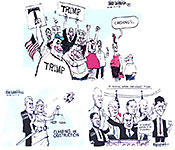
Eggo1.jpg)

Eggo2.jpg)
Eggo3.jpg)
Eggo4.jpg)
Eggo5.jpg)
Eggo6.jpg)
Eggo7.jpg)
Eggo8.jpg)
Eggo9.jpg)
Eggo10.jpg)
Eggo11.jpg)
Eggo12.jpg)
Eggo13.jpg)
Eggo14.jpg)
Eggo15.jpg)
Eggo16.jpg)
Eggo17.jpg)
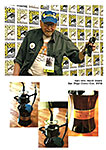
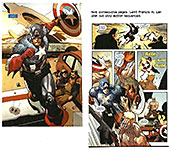
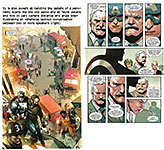

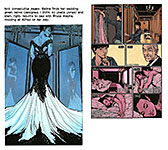
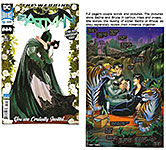
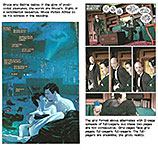
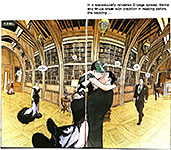
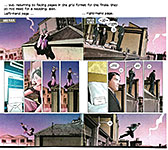

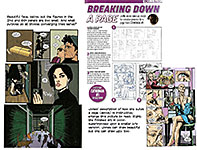

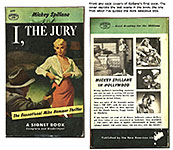
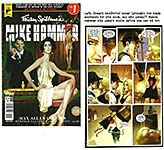
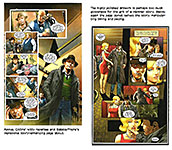
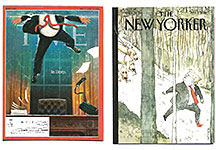
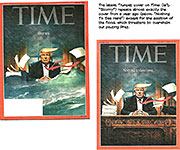
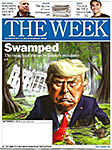
1.jpg)
2.jpg)
3.jpg)
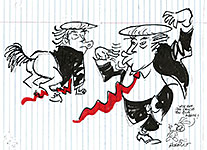
4.jpg)
5.jpg)
5a.jpg)
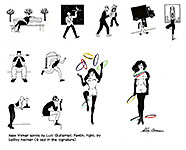
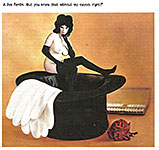
6.jpg)
7.jpg)
8.jpg)
9.jpg)
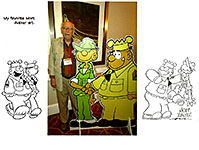
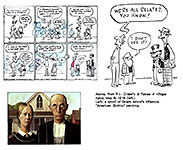
10.jpg)
11.jpg)
12.jpg)
13.jpg)
14.jpg)
15.jpg)
16.jpg)
